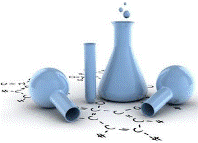Chemical and Biomolecular Engineering, Department of
ORCID IDs
Demirel 0000-0002-8183-0991
Date of this Version
2019
Document Type
Article
Citation
International journal of Hydrogen Energy (2019) 44: 7,125–7,136
doi: 10.1016/j.ijhydene.2019.01.124
Abstract
Thermotoga maritima is an anaerobic hyperthermophilic bacterium known for its high amounts of hydrogen (H2) production. In the current study, the kinetic modeling was applied on the engineered strains of T. maritima that surpassed the natural H2 production limit. The study generated a kinetic model explaining H2 overproduction and predicted a continuous fermentation system. A Leudking-Piret equation-based model predicted that H2 production by Tma200 (0.217 mol-H2 g–1-biomass) and Tma100 (0.147 mol-H2 g–1-biomass) were higher than wild type (0.096 mol-H2 g–1 -biomass) with reduced rates of maltose utilization. Sensitivity analysis confirmed satisfactory fitting of the experimental data. The slow growth rates of Tma200 (0.550 h–1) and Tma100 (0.495 h–1) are compared with the wild type (0.663 h–1). A higher maintenance energy along with growth and non-growth H2 coefficients corroborate the higher H2 productivity of the engineered strains. The modeled data established a continuous fermentation system for the sustainable H2 production.
Included in
Biomedical Engineering and Bioengineering Commons, Catalysis and Reaction Engineering Commons



Comments
Copyright © 2019, Elsevier. Used by permission